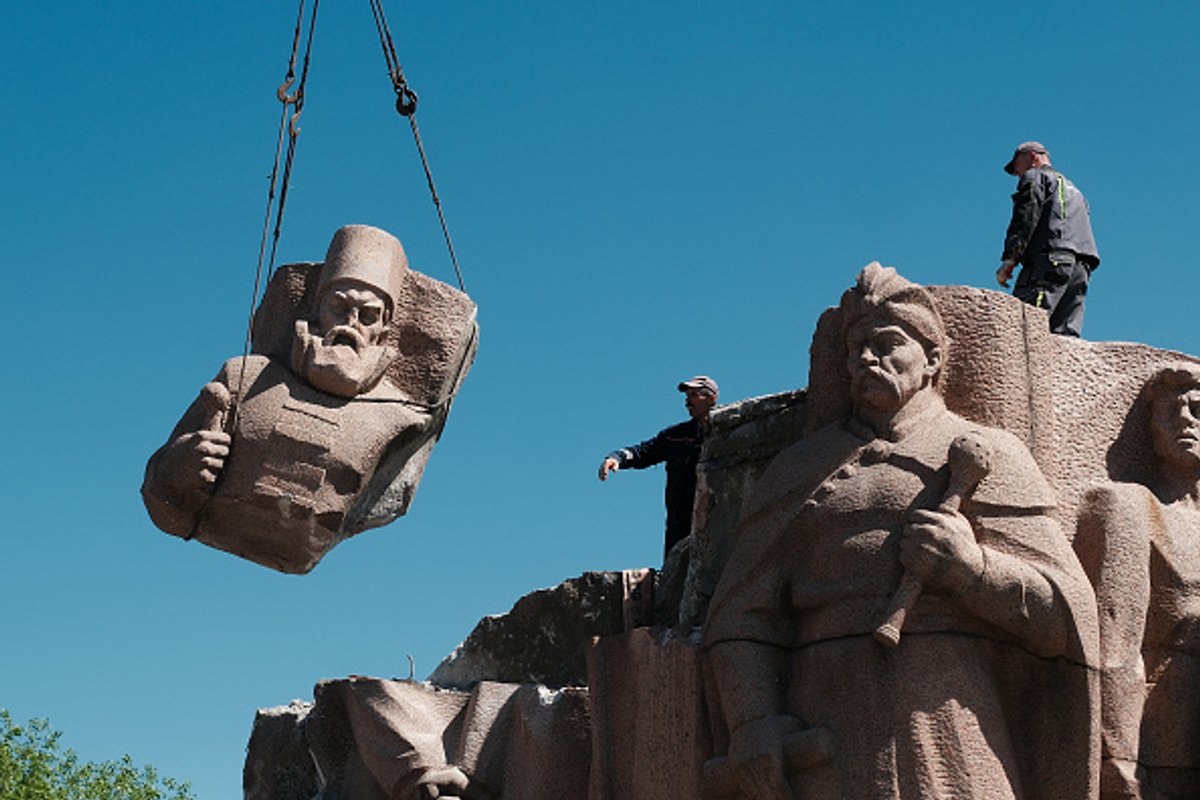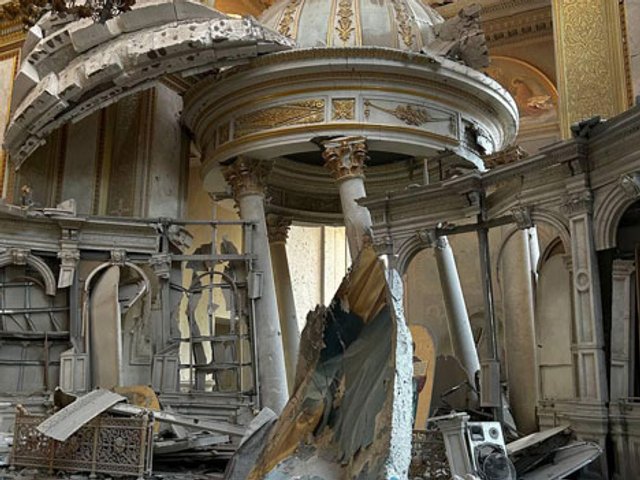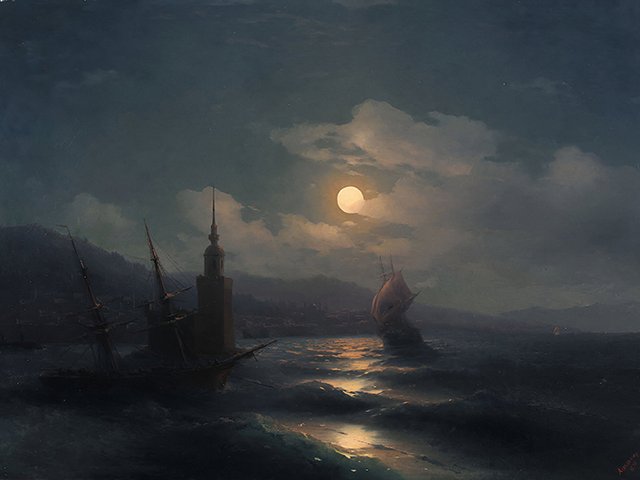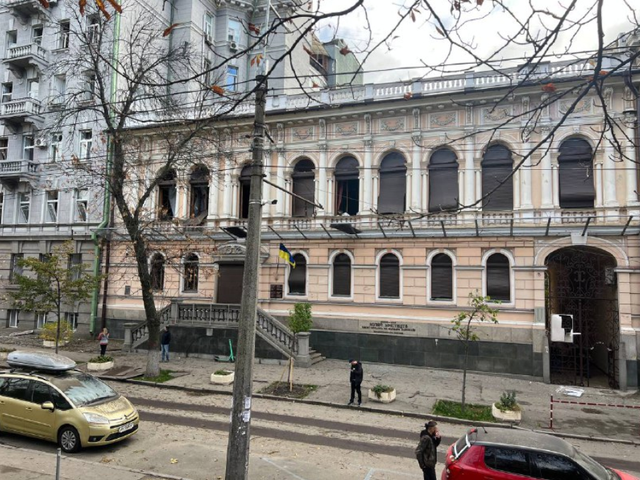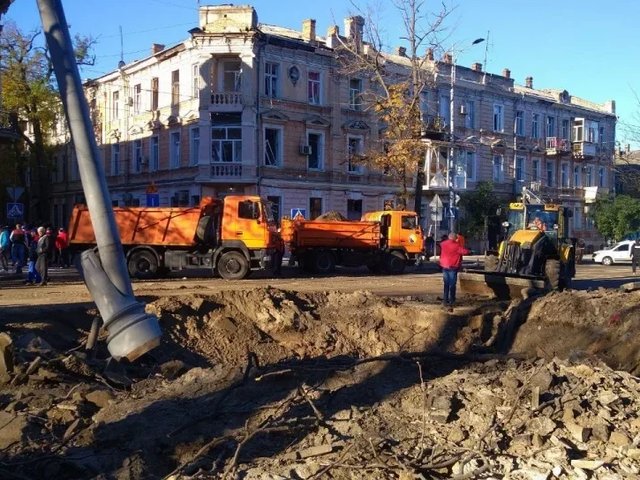A Soviet-era monument believed to glorify Ukraine’s ties to Russia is being dismantled on orders of the Kyiv city government in the latest stage of derussification following Russia’s full-scale invasion of Ukraine in February 2022.
Kyiv’s Department of Territorial Control announced the start of the monument’s removal in a Facebook post on 30 April, stressing its massive size: “The sculptural composition is large, consists of about 20 elements weighing between 6,000kg and 7,000kg each. Due to the complexity of the design, dismantling may take a few days.”
The monument to the Pereyslav council was installed in 1982 under what is now known as the Arch of Freedom of the Ukrainian People (previously known as People’s Friendship Arch), it is part of an ensemble depicting a narrative of historical unity with Russia. Located in Khreshchatyk Park overlooking the Dnipro River, it was created to coincide with Kyiv’s 1,500th anniversary, the 60th anniversary of the Soviet Union, and the 65th anniversary of the 1917 October Revolution.
In April 2022, Sergei Mirgorodsky, an architect who was one of the designers of the ensemble, praised the removal of a second sculpture there, which depicts a Ukrainian and a Russian labourer. “I feel joy. Finally! Friendship with Russia is over,” he told the TSN news channel.
Discussions about the fate of the rainbow-shaped titanium arch are ongoing. Anton Drobovych, a philosopher who heads the Ukrainian Institute of National Memory, wrote last month in a column for Ukraine’s New Voice magazine that short of dismantling it, the best approach so far towards eradicating the monument's totalitarian past was a 2017 art installation called Arch of Diversity, which saw it be painted with rainbow colours for the Eurovision Competition held in Kyiv that year.
According to Drobovych, “such an artistic decision definitely separates us from modern Putin's Russia, in which representatives of LGBTQ+ communities are persecuted, and freedom of self-expression and free choice of gender roles are called a sign of the ‘satanic West’”.
Ukrainian historians say that the Pereyaslav Rada monument—which depicts Bohdan Khmelnytsky, the leader of the Zaporizhzhian Cossacks, and the Russian tsarist envoy Vasiliy Buturlin agreeing to a pact in 1654—is a symbol of Russian imperialism. In launching the invasion and repeatedly since then, Russian president Vladimir Putin has claimed that Russia and Ukraine are one nation.
Statues of Vladimir Lenin, the founder of the Soviet state, started coming down en masse across Ukraine during the 2014 Maidan Revolution. After the annexation of Crimea, a law was introduced in April 2015 that took aim at all communist symbols, leading to the removal of over 2000 monuments by 2020.
Since the full-scale invasion of the country, monuments to Russian imperial culture have also been taken down, including ones depicting Catherine the Great in Odesa, and dozens of Alexander Pushkin, Russia’s national poet, who was killed in a duel in 1837, and is beloved by Putin.


